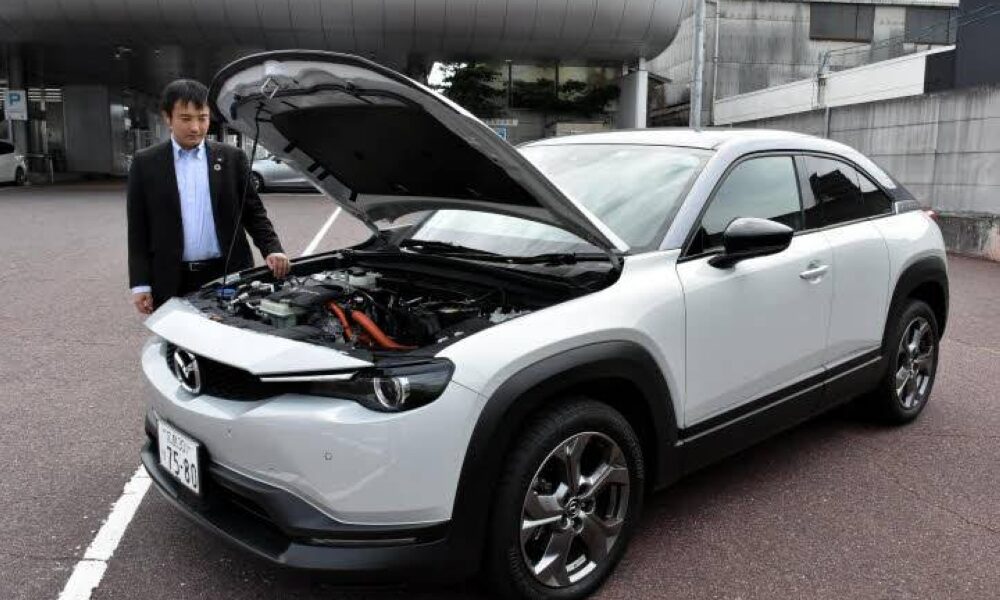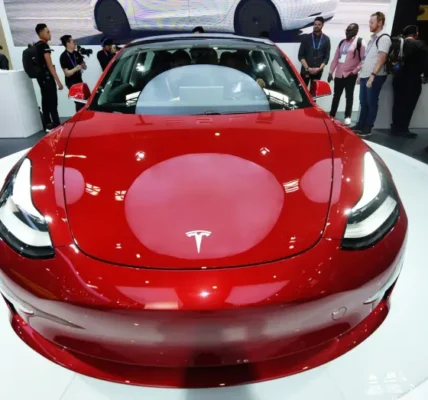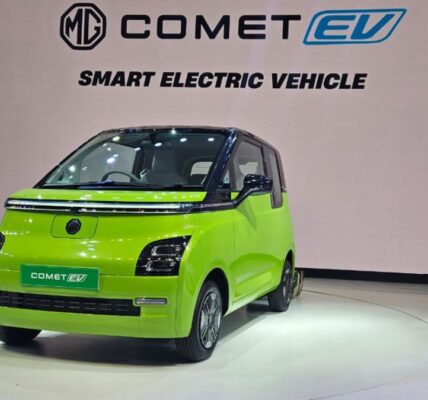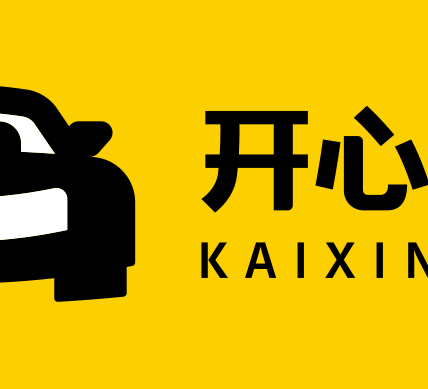Immediately after taking the helm of Mazda Motor, newly appointed President Masahiro Moro, who took office on June 27 in the first leadership change in five years, flew to China.
“We are finally going to start full-scale operations here,” he wrote in an email sent to people involved, determined to turn around sluggish China sales as his first mission as president.
Mazda’s sales in China in the year from April 2022 had halved from the previous year to 84,000 units. The main reason was a thin lineup of electric vehicles popular in China, with the CX-30, launched in the autumn of 2021, being the only EV model for the Chinese market. While other companies launched new models one after another, Mazda sold only about 200 units of the CX-30 in fiscal 2022, which ended in March this year.
Targeting a 50% increase
In fiscal 2023, the company aims to achieve a 50% increase in sales in China. Although a new EV model, which Mazda sees as its “main product,” will not arrive in time, the company is pinning its hopes on the CX-50 hybrid vehicle set to be put on sale in the fall. With the sport utility vehicle, which was originally planned for the North American market, the company aims to attract customers looking for cars for outdoor activities.
For carmakers, electrification is now a prerequisite for complying with environmental regulations in various countries. In China, in particular, sales of EVs and other environmentally friendly vehicles account for a quarter of all new vehicles sold. The Chinese government’s generous support for EVs, including subsidies and tax breaks, has led to their rapid sales expansion and fierce price competition.
“China is going straight into electrification,” Moro said, with a sense of crisis. “Some customers are coming into dealerships only to buy EVs.”
Mazda will introduce new electric models to the Chinese market, including fully electric and hybrid vehicles, every year from fiscal 2024. China has been the world’s largest market in terms of new vehicle sales for 14 consecutive years.
Mazda plans to accelerate its shift to electrification through joint ventures with local companies in order to “capture the revenues it had failed to generate,” a company official said.
In markets other than China, however, Mazda is not necessarily rushing to electrify its vehicles. The European Union, which had tried to ban the sale of new gas-powered vehicles by 2035, has made it possible to continue selling the vehicles on the condition that synthetic fuels are used. In the United States, policy directions differ from state to state.
Being ‘a follower’
“We will not be the front-runner in EVs, but rather a willing follower until 2030,” Moro says. While making profits with its existing models — especially its large SUVs — the company will spend time on developing technologies for batteries and powertrains. Mazda plans to launch EVs on a full-scale globally from 2028.
There is already demand for EVs made by the company. Tomohiro Hatanaka, general manager of the new car sales division at Mazda dealer Enfini Hiroshima, said, “Some companies only use electric and hybrid vehicles as company cars.” Expectations for EVs will likely grow also among individual customers looking for Mazda’s “fun to drive” features.
Moro says environmental responsiveness is a prerequisite as a carmaker, while the firm’s mission to deliver a “joy of driving” must also remain intact in the future. EVs have the potential to deliver on both of those goals.
As long as Mazda is committed to being a “follower,” it is expected to demonstrate its uniqueness in vehicles’ performance and ride quality, and offer values that surpass those of its rivals. “We will mass-produce the excitement of the mobile experience,” Moro said.
Parts suppliers
Toshio Uno, an executive at auto parts manufacturer Hirotec, says the company must take on the challenge of developing EV parts even if it’s costly.
Since last August, Hirotec has been developing production technology for EV powertrains at a joint venture with fellow parts-makers Hiroshima Aluminum Industry and Ondo, along with Mazda.
EV powertrain components include electric motors and electronic control units, and EVs don’t need the mufflers Hirotec manufactures. While a gasoline-powered car is said to have about 30,000 parts, an EV needs about 20,000, which means that electrification could change not only the structure of cars but also the automotive industry as a whole.
Mazda estimates that in the Chugoku region there are about 10,000 workers involved in the production of internal combustion engines, including those who work at parts suppliers.
“In order to maintain the industry and employment, the entire supply chain, including our business partners, must change its business models,” said Ichiro Hirose, Mazda’s director and senior managing executive officer. The establishment of the joint venture with local parts manufacturers is the first step in such efforts.
Mazda will invest ¥1.5 trillion in its shift to electrification by 2030, including through collaborations with its business partners. Money will be spent on a wide range of research and development, including that for EV motors and batteries, but there is no guarantee that all suppliers will be involved.
Some component-makers are already facing headwinds. A top executive of a local parts manufacturer complained, “If the parent (Mazda) doesn’t pursue volume, we won’t be able to make a profit.” The parts-maker’s sales in the most recent business year were down slightly from the previous year, while Mazda posted record sales.
In the fiscal year that ended in March 2022, Mazda’s break-even point was below 1 million units, as it improved production efficiency amid parts shortages caused by the pandemic and it also raised unit prices. While Mazda’s business foundation has become stronger, parts suppliers suffered, as their basic strategy is to sell in large volumes.
Mazda has indicated that it will expand cooperation with local suppliers beyond powertrains. However, an executive at a company that also knows other automakers said, “Many of Mazda’s suppliers are small companies. As the shift to electrification progresses, the shakeout will accelerate. There is the option of switching to a business that does not rely on Mazda.”
The semiconductor industry, backed by government support, has the potential to offer opportunities for local suppliers. As was seen in a massive investment by Micron Memory Japan at its Hiroshima plant, there is growing space for related firms to do business in the industry.
Akinobu Teramoto, director of the Research Institute for Nanodevices at Hiroshima University, welcomes a possible shift in business models. “Parts manufacturers can advance into chip production equipment if they accumulate expertise in fields such as clean rooms,” he said.
Mazda’s latest drive for electrification is not the first time local suppliers have been affected by larger firms’ strategies. The semiconductor industry is also undergoing changes. Amid such a volatile environment, Mazda and parts manufacturers are trying to find a new balance in how closely they work together.







